|
-
10th November 19, 06:30 AM
#1
Tapered apron overlap
Having conquered my pleating problems thanks to the Wizard of BC, I have another question that may have a fairly obvious answer.
Making a kilt pleated to sett with knife edge pleats per TAOK.
Should the apron lap over the first couple of pleats at the bottom of the kilt where the aprons taper is widest?
The pattern repeats like it should across the apron to the pleats, just making sure before I start sewing.
-
-
10th November 19, 12:54 PM
#2
No, the aprons should not overlap in any appreciable manner. The sides of the apron are not necessarily widest at the Selvedge edge as the apron taper is narrowest at the waist tapering outward to the hips and then down to the bottom in a gentle "S" curve.
The whole idea. the goal, is the have the apron edges fall straight down just like the pleats.
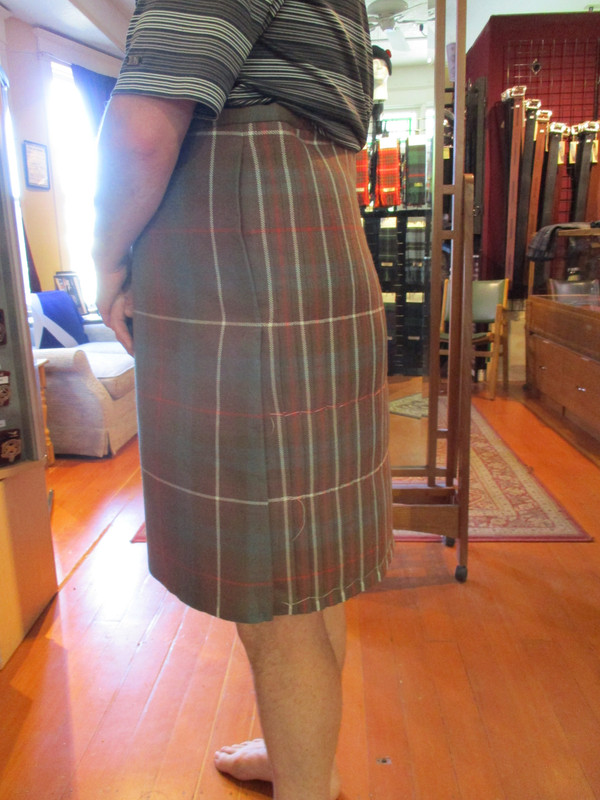
What you want to avoid at all cost is the apron gaping open at the first pleat.
This gape is just unsightly.
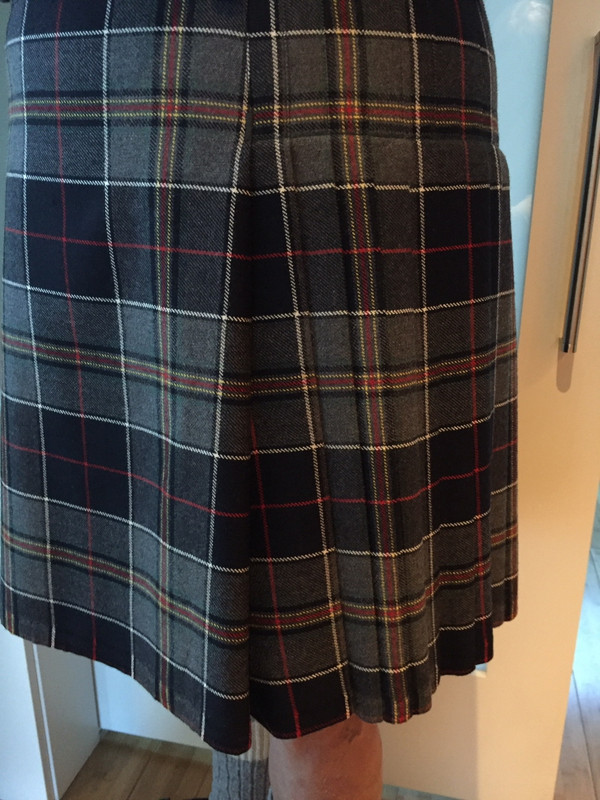
-
The Following User Says 'Aye' to Steve Ashton For This Useful Post:
-
10th November 19, 04:13 PM
#3
Thanks.
I probably overdid the taper, time to backtrack.
-
-
10th November 19, 04:18 PM
#4
-
-
10th November 19, 04:24 PM
#5
Since there is only 1" difference between my hip and waist measurement should the apron fall straight down from the hip?
-
-
10th November 19, 04:26 PM
#6
Splits are 20/20 at the waist and 20.5/20.5 at the hips
-
-
10th November 19, 04:34 PM
#7
My taper was more of a trapezoid than an S. Your 1st pic clearly shows where I went wrong.
-
-
10th November 19, 05:32 PM
#8
Wool is an amazingly moldable fabric. With a little steam you can form or mold wool to take a huge range of shapes.
Not so with some other fibers. Cotton for instance. Cotton resists the type of shaping that is so easy with wool. Not impossible, but harder.
Some synthetics do not lend themselves to shaping either.
So, when making a kilt, it is a good idea to know and understand the characteristics of the fiber you are working with.
When making a kilt from less moldable fabrics we often create the apron edges as straight lines. This is the trapazoud shape you refer to.
But wool is special and one of the reasons it has been the premium kilt fabric for so long.
We mark the front apron, waist split - and the front apron hip split on the fabric, and join them in a gentle "S" shaped curve.
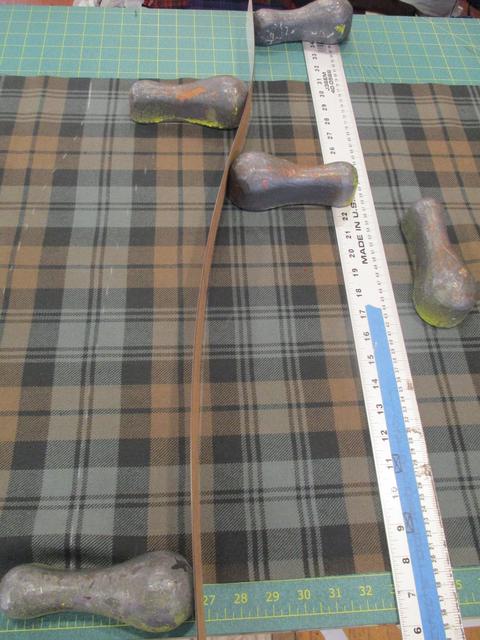
This shape goes straight up in the rise area, and at the selvedge is very close to straight down.
When you first crease this "S" shaped curve the Tartan pattern may not want to lay down aligned.
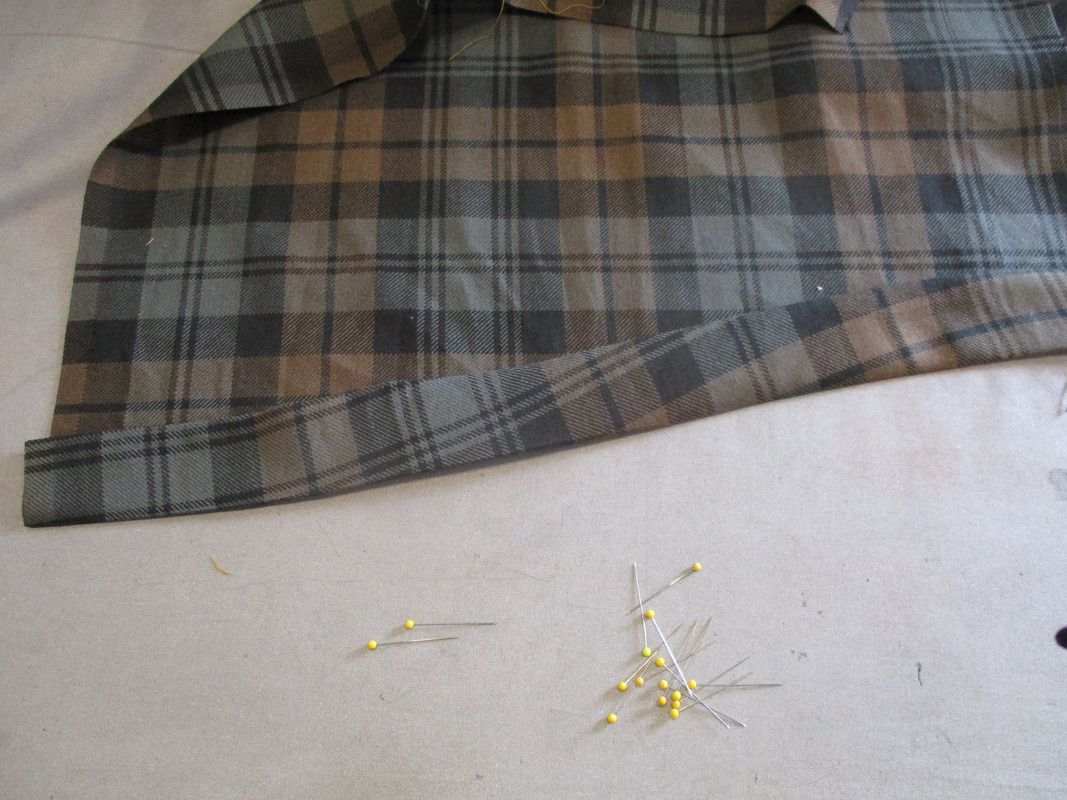
So you pin the curve with the Tartan aligned and this causes huge, ugly puckers and wrinkles.
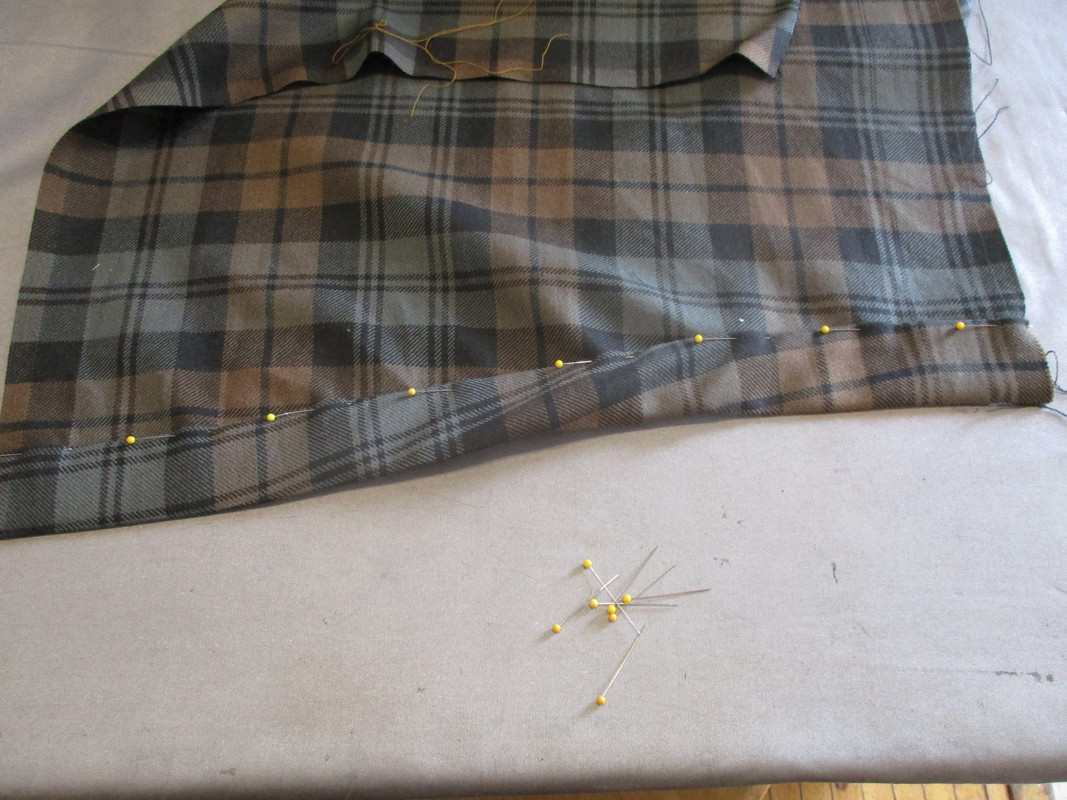
But just a few moments of the heat from steam softens the fibers allowing the fabric to lay down and behave.
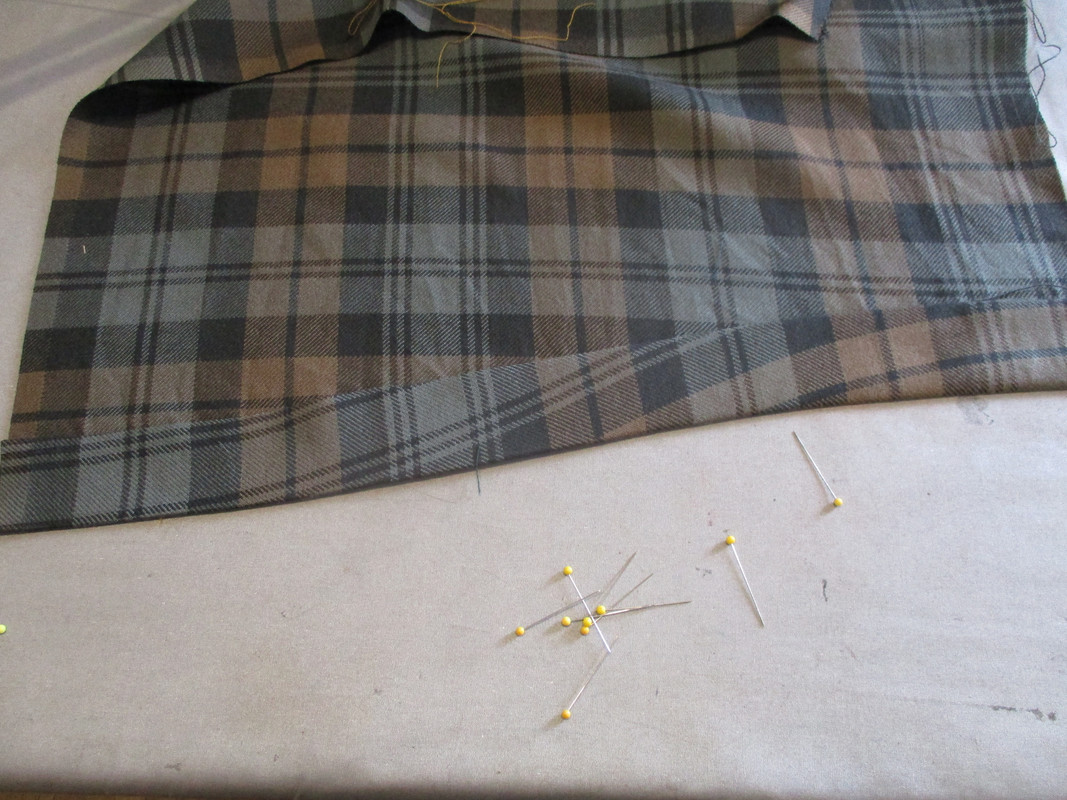
It is "S" curve shape that allows the apron edges to fall straight down without gaping. It is what allows the apron edges to gently curve towards the back, around the legs.
From the center apron element mark left and right - half of your waist split at the waist height - and half the apron hip split left and right from the center element at the height of the bottom of the Fell Area.
Then join these two marks with a gentle "S" curve.
Yes, it may look odd at first with the fabric laid flat on your ironing table - It may look like the Tartan pattern will be distorted - But once over a 3 dimensional human body it will look OK.
Last edited by Steve Ashton; 10th November 19 at 05:33 PM.
-
The Following 4 Users say 'Aye' to Steve Ashton For This Useful Post:
-
10th November 19, 05:38 PM
#9
Thanks.
World of difference from what I had done.
-
-
10th November 19, 05:54 PM
#10
May I suggest going back and reading the book again. Then keeping it open to the section you are working and understand why it shows on pages 55-56 the shape as a curve.
Last edited by Steve Ashton; 10th November 19 at 05:58 PM.
-
 Posting Permissions
Posting Permissions
- You may not post new threads
- You may not post replies
- You may not post attachments
- You may not edit your posts
-
Forum Rules
|
|






















Bookmarks